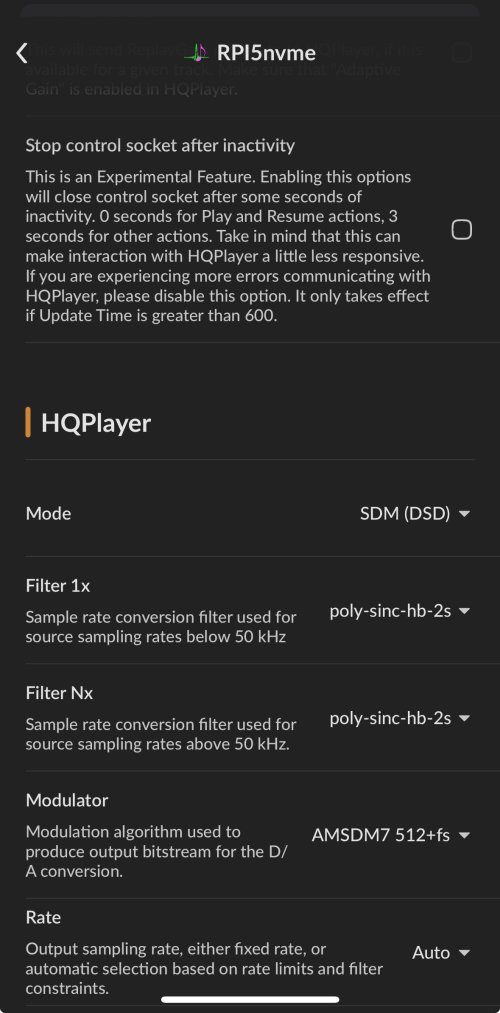This is good to know, thank you.I have now tested Src-dx and also a rpi4 with Hqplayer. I think, the benefit of Src-dx (or any DDC for that matter) is dependent on the usb implementation of the source. In my case, I hear no difference between direct usb vs Src-dx dual bnc, where the source is a two year old MacBook Pro.
I also found out that for upscaling 16/44.1 kHz files to 24/768 kHz, rpi4 would not work with all the higher end filters such as sinc-M, sinc-Mga, etc. I even confirmed with the Hqplayer developer on audiophilestyle forum, that these filters would not work for 16x upsampling with rpi4. These filters do however work with 24/96 kHz and higher. Also, rpi4 can work as a great network audio adapter for Hqplayer running on a powerful pc nearby. I will therefore stick to the MacBook Pro for now.
I have an RPi4 running as NAA in my trial using my MacBook Pro. I thought another RPi4 I have could be used to run the embedded version of HQPlayer for PCM conversion to 768, but I couldn’t get it installed on DietPi. Now I don’t have to slog through install issues only to find it won’t work anyway.
If I can get it working on my MacBook I’ll get a NUC or something more powerful.

































